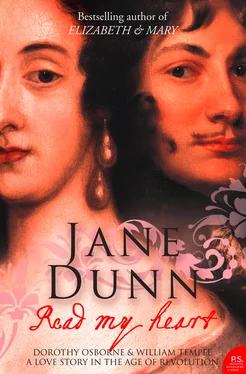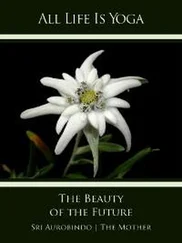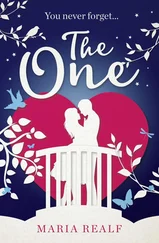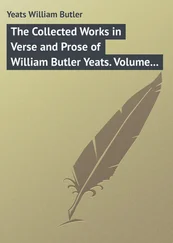1 ...6 7 8 10 11 12 ...32 Dorothy’s youngest Danvers uncle, Sir John, born in 1588, was perhaps the most individual of them all and the uncle she knew best. He had a strong aesthetic taste in houses and gardens and when Dorothy was a girl she and some of her family lodged for a time in his magnificent house in Chelsea. His influence on his young niece was likely to be lasting as he lived until she was in her late twenties. As a young man John Danvers’s beauty matched his singular discrimination in art and architecture. Aubrey recalled his good looks and charming nature: ‘He had in a faire Body an harmonicall Mind: In his Youth his Complexion was so exceedingly beautifull and fine, that … the People would come after him in the Street to admire Him. He had a very fine Fancy, which lay (chiefly) for Gardens, and Architecture.’ 6
So great was his interest and skill in gardening that Aubrey claimed the garden Sir John created for his house at Chelsea † was the first to introduce Italianate style to London. Its beauty was legendary and it was this garden, full of harmony of scale and proportion, of scented plants and fruiting trees, that Dorothy would have known as a child. Sir John’s own sensual response to its delights was captured by the great biographer in this evocative vignette of how he scented his hat with herbs: ‘[he] was wont in fair mornings in the Summer to brush his Beaver-hatt on the Hyssop and Thyme, which did perfume it with its naturall spirit; and would last a morning or longer’. 7 He leased a part of his land to the Society of Apothecaries and eventually they established the famous Chelsea Physic Garden there in 1673, one of the oldest botanical gardens in Europe.
When John Danvers was barely twenty he married Magdalen Herbert, the widow of Richard Herbert and mother of ten children, one of whom became the famous poet and divine, George Herbert. * John was knighted by James I the following year in 1609. Two more marriages to heiresses followed but his extravagant tastes in interior decoration and horticultural grandeur resulted in mounting debts. He was a member of parliament and a gentleman of the privy chamber under Charles I. Always generous ‘to distressed and cashiered Cavaliers’, eventually his own debts caught up with him, making him reluctant to help finance the king’s expedition to Scotland in 1639. By the beginning of the civil war in 1642 he took up arms for parliament against the king. On Charles’s defeat he was one of the commissioners appointed to try the king and subsequently a signatory to the royal death warrant.
Dorothy’s Danvers uncles had had ‘traitor’ and ‘murderer’ attached to their names; now Sir John, to whom she had been closest, became notorious in history as Danvers the ‘regicide’. † Given her father’s passionate and unquestioning support for Charles I, willing to give his fortune and even his life for him, it must have been difficult for Dorothy in this febrile time to reconcile a fond and admired uncle being so closely implicated in the murder of the king.
Katherine Danvers was Dorothy’s Aunt Gargrave, a formidable battleaxe in the family armoury who would be used against Dorothy in the intractable matter of her marriage. She herself had married a profligate husband, Sir Richard Gargrave, who had squandered his vast fortune in record time. This meant all her redoutable talents were put to work in squabbling with her family and the government over various properties she claimed as hers.
So it was that Dorothy grew up in a family of very mixed talents and fortunes. This continuity of domestic life included the legacy of ghosts and stories of the previous generations with their individual extremes of triumphs and sorrow. Born in 1627, most probably at Chicksands Priory, she was the youngest of ten children, two of whom had already died. Her eldest surviving sibling was her seventeen-year-old sister Elizabeth, who was yet to marry and have three daughters before dying aged thirty-two at the outbreak of the first civil war. The rest were all older brothers, the closest of whom was Robin, the brother who accompanied Dorothy to the Isle of Wight on their fateful visit in 1648. He was only one year older than Dorothy and they grew up closely bonded as the babies at the end of a large family.
It was unusual then for Dorothy, as the youngest of a large family, to have so many grandparents still living. Her Osborne grandfather died the year after she was born at the age of seventy-six, Sir John’s wife, another Dorothy Osborne, died at the same great age but when Dorothy was eleven and old enough to have memories of her. Her dashing maternal grandmother, Elizabeth Danvers, by this time Lady Carey, was even longer lived, dying in 1630 when Dorothy was three years old, but she remained a great personality in family lore.
Chicksands Priory was the Osbornes’ family home and already an ancient building full of history when they lived there. In the twelfth century, at the height of the religious fervour that drove the second crusade against the Muslims, the manor of Chicksands (there was a variety of spellings through the centuries) was donated by Countess Rose de Beauchamp and Baron Payne to the Gilbertine Order for the building of a religious house. * Two cloisters, one for men and one for women, were constructed on the north bank of the River Flit near the village of Campton and the market town of Shefford. The troublesome priest Sir Thomas à Becket, when Archbishop of Canterbury and at odds with Henry II, was believed to have sought refuge at Chicksands Priory in 1164 before fleeing into temporary exile in France. After centuries of mixed fortunes but relative peace, the cataclysmic dissolution of the monasteries enacted under Henry VIII’s decree ended the religious life at Chicksands in 1538, some 388 years after the priory was first founded.
Once the resident monks and nuns had been dispersed the agricultural land was leased to farmers and the buildings and estate sold off: by the end of the sixteenth century the priory itself had fallen into serious disrepair. At the time Dorothy’s grandfather acquired the estate, the only remaining building that was suitable as a domestic dwelling was the ancient stone cloister built for the nuns. Along with the estate came legends of a series of secret escape tunnels and the ghost of a nun who had been walled up in a windowless room. Given its history, the existence of tunnels to lead religious personages to safety (or offer the inmates a means of escape back to the secular world) would seem perfectly reasonable, yet after generations of curious investigators have banged and tapped and excavated the property nothing has been found. However, the less likely tale of a cruelly sacrificed nun has been given more enduring life through the reporting – and probable exaggeration – across the centuries of various strange sightings and supernatural experiences. A false window on the east front of the priory added fuel to the over-heated speculations of the nun’s forbidden liaisons, scandalous pregnancy and a murdered lover in the priory’s murky past. †
Certainly Dorothy and her family seemed to have nothing but affection for the place and the quiet and prosperous rural life that they lived there. However her father’s duties as lieutenant governor of Guernsey were to require long absences from home and in the end almost beggared the Osborne fortune. The first scare occurred in the period around Dorothy’s birth and infancy. At the beginning of 1626 England was at war with Spain and intelligence reports suggested the islands of Guernsey and Jersey were likely to be invaded. The attempted invasion of England by the Spanish Armada barely thirty-eight years before lingered in the memory and mythology of many, even those who were as yet unborn at the time. To make matters worse, France too seemed ready to strike at these vulnerable islands in response to the Duke of Buckingham’s failed attempt to aid the Protestants under siege at La Rochelle. By October 1627, Sir Peter Osborne was dispatched to Guernsey in charge of 200 men * as reinforcements in the defence of Castle Cornet against possible French or Spanish adventuring.
Читать дальше












